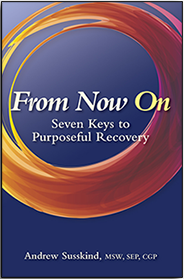Hurt is a designer emotion. It’s the hub of the wheel surrounded by anger, sadness, disappointment, disillusionment and shame. When you feel deeply hurt, it leaves you with an emotional wound that requires close attention. Putting a band-aid on it won’t heal it. You need to keep it clean, change the emotional dressing daily and give it oxygen until the healing process unfolds. Sometimes hurt doesn’t go away entirely, but instead, it offers perspective and less acute pain eventually. But what does hurt have to teach you?
There was an argument on the playground. Johnny fell down after Joey shoved him to the ground. “Johnny wouldn’t share his potato chips. That hurts my feelings,” Joey explained. Johnny cried out, “he made me mad because I was really hungry . . . I didn’t want to share them.”
This childhood conflict illustrates how kids typically blame others and end up pointing the finger elsewhere rather than looking at their own part. Nobody can actually make you feel a certain way so ultimately it’s up to you to process your reactions to others. As a grown-up, you have many choices for processing emotions that begin with taking full responsibility for all of your feelings and reactions. Many adults remain immature and become experts at finger pointing rather than looking within. In this article we’re going to look at more effective, adult ways to metabolize hurt.
“I’m creating this. It’s not the other person’s fault.” When your feelings are hurt, can you say this to yourself and really mean it? Once you take full responsibility for your feelings, you remove yourself from falling into victim mode. If you’re ready to look deeper within yourself, you may realize that these feelings are not something to be worked out with the other person. Instead, it will be more valuable to create a productive inner dialogue.
When the activation from the hurt is still high, your perceptions will be distorted, and the other person’s perceptions remain distorted. Therefore, it’s not the ideal time to process feelings. Acknowledge your hurt feelings. Be compassionate with yourself. Give yourself plenty of time to attend to your wound.
When you’re feelings are hurt by someone, you will often try and make meaning out of the other person’s behavior. You might find yourself obsessing about the situation possibly resulting in a feeling of shame or “not good enough.” The other person has no power to do any of this to you so it’s up to you to disentangle this emotional knot.
Another common experience related to hurt feelings results in you generating an illusion of separateness which often manifests in the position of “superior victim.” You may move into a “one-up” position while at the same time playing the victim as if something has been done to you. This is a common way of protecting yourself but also creates an artificial separateness from the other person. Getting out of the superior position of self-righteousness allows you to move toward similarities and sameness resulting in more connection and compassion.
If you’re able to see the sameness between you and others, you will begin seeing them as your teacher while holding them in positive regard. When your feelings are hurt, the other person becomes a mirror reflecting hidden parts of yourself.




